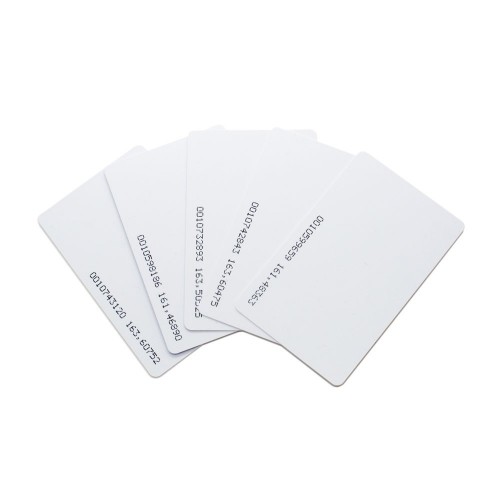سبد خرید شما خالی است!
دسته بندی
- کالاهای جدید
- فروش ویژه
- آردوینو
- ماشین های مونتاژ PCB
- کتاب ها و پکیج های آموزشی
- کیت ها
- گلخانه هوشمند
- مینی پی سی
- سایر بردها
- قطعات الکترونیک
- ماژول های صوتی
- ارتباطات
- دوربین و تصویر برداری
- ربات های پرنده
- محصولات RFID
- سنسور ها و ماژول ها
- لیزر ها
- LED و لامپ
- USB Host
- اسکنر بارکد
- انکودر
- بخار ساز
- تاریخ و ساعت
- تشخیص اثر انگشت
- تشخیص سطح مایع
- تشخیص مانع و خط
- سایر ماژول ها
- سنجش مسافت
- سنسور پی هاش
- شعله و حرارت
- عصب و عضله
- فشار و ارتفاع
- ماژول دوربین
- مولد سیگنال
- نبض و فشار خون
- نیرو و وزن
- هاب
- هواشناسی
- پتانسیومتر
- پرینتر و چاپگر
- کارتخوان مغناطیسی
- کوره القایی
- کی پد و جوی استیک
- حرکت و لرزش
- شتاب و زاویه
- تشخیص گاز
- جریان و ولتاژ
- دما و رطوبت
- کارتخوان اس دی
- سوئیچ و رله ها
- صوت و آوا
- مکان یابی
- ژیروسکوپ
- لمس و فشار
- مبدل ها
- نور و رنگ
- آب و مایعات
- امواج مغزی
- رادیو اکتیو
- جریان آب
- مغناطیس
- گرد و غبار
- اثر هال
- ابزار آلات و تجهیزات
- آهنربا و مغناطیس
- ابزار اندازه گیری
- ابزار لحیم کاری
- اسکرچرها
- باکس و نگهدارنده
- برد بورد-مدار چاپی
- تبدیل ها
- تجهیزات کامپیوتری
- ترازوی دیجیتال
- دستگاه اسید کاری
- شیر برقی
- فن
- قفل های الکترونیکی
- قلم مو
- لوازم بسته بندی
- لوازم چاپ PCB
- محافظ برق شهری
- مولتی متر
- میکروسکوپ
- هاب
- هیتر ها
- پمپ
- چسب ها
- کابل و سیم
- کارت حافظه و مبدل
- پروگرامر و آنالایزر
- اسیلوسکوپ
- سایر
- ابزار
- منبع تغذیه و باتری
- موتور ها و درایور
- هوشمند سازی و امنیت
- نرم افزار ها
- نمایشگر ها و درایور
- قطعات رباتیک
- پروفیل و اتصالات مربوطه
- پرینتر سه بعدی
- محصولات واحد پرینت 3بعدی
- اسکنر سه بعدی
- ماشین های CNC و برش
- پروژه ها

کارت RFID با فرکانس 125 کیلو هرتز - بسته 10 عددی
قیمت:
70,000 تومان
تگ کارتی RFID فرکانس 125KHz
کارت RFID با فرکانس 125 کیلو هرتز یکی از محصولات پرکاربرد در حوزه شناسایی خودکار و ردیابی الکترونیکی است که بر پایه فناوری امواج رادیویی طراحی شده است. این کارت ها از نوع تگ کارتی RFID بوده و در دسته فرکانس پایین (Low Frequency) قرار می گیرند که مناسب برای کاربردهای فاصله نزدیک مانند کنترل دسترسی ، مدیریت ورود و خروج و سیستم های امنیتی می باشند. این محصول بر اساس پروتکل ISO10536 طراحی شده و با استاندارد EM4100 سازگار است.
کارت دارای شناسه منحصر به فرد 64 بیتی بوده و از طریق آنتن تعبیه شده درون بدنه خود می تواند سیگنال های دریافتی از دستگاه خواننده را دریافت کرده و اطلاعات ذخیره شده را انتقال دهد. یکی از مزایای مهم کارت 125 کیلو هرتز RFID ، عدم نیاز به تماس فیزیکی با دستگاه است ؛ به این معنا که تنها با نزدیک شدن به دستگاه خوانش، فرآیند شناسایی انجام می شود. بدنه کارت از جنس PVC مقاوم ساخته شده و با ابعاد استاندارد 85.6 × 54 میلی متر و ضخامت 0.86 میلی متر عرضه می شود. این ابعاد مشابه کارت های بانکی رایج بوده و باعث می شود بتوان آن را به راحتی در کیف پول یا جاکارتی حمل کرد.
بازه دمایی عملکرد کارت بین 20- درجه تا 50+ درجه سانتیگراد است که امکان استفاده در محیط های گوناگون را فراهم می کند. کارت RFID با قابلیت خواندن بدون تماس، گزینه ای ایده آل برای استفاده در سازمان ها ، ادارات ، هتل ها ، پارکینگ ها و مجموعه هایی است که به سیستم کنترل دسترسی هوشمند مجهز هستند. در سیستم های پرداخت بدون تماس نیز این کارت می تواند به عنوان یک ابزار پرداخت سریع و مطمئن عمل کند.
از لحاظ ساختاری ، هر تگ RFID شامل سه جزء اصلی است : یک مدار مجتمع برای ذخیره و پردازش داده ، یک آنتن برای ارسال و دریافت سیگنال ها و بخشی که انرژی مورد نیاز را از امواج دستگاه خواننده تامین می کند. این طراحی باعث می شود کارت بدون نیاز به باتری یا منبع تغذیه جداگانه کار کند. به دلیل بهره گیری از حافظه غیر فرار، اطلاعات کارت حتی در صورت قطع انرژی حفظ می شود.
فناوری RFID نه تنها در زمینه امنیت و شناسایی بلکه در صنایع حمل و نقل ، لجستیک ، ردیابی اموال و حتی در رویداد های ورزشی و پزشکی نیز کاربرد دارد. یکی از ویژگی های مهم این فناوری ، امکان شناسایی هم زمان چندین کارت در محیط است ؛ اگرچه باید توجه داشت در صورت قرار گرفتن چند کارت در نزدیکی یکدیگر ، ممکن است دستگاه در تشخیص دقیق دچار مشکل شود. کارت های RFID بر پایه امواج الکترومغناطیسی طراحی شده اند و بسته به نوع فرکانس می توانند برای کاربردهای مختلف مورد استفاده قرار گیرند.
در این میان ، تگ 125 کیلو هرتز RFID به دلیل پایداری سیگنال و امنیت بالا ، یکی از محبوب ترین گزینه ها در سیستم های کنترل تردد به شمار می رود. این کارت به دلیل طراحی مقاوم و عملکرد بدون خطا در محیط های گوناگون ، انتخاب مناسبی برای پیاده سازی راهکارهای شناسایی و ردیابی پیشرفته است. فناوری به کار رفته در کارت RFID با فرکانس 125 کیلو هرتز امکان تبادل اطلاعات با سرعت بالا را فراهم می سازد و این ویژگی ، آن را برای پروژه هایی که نیاز به دقت و سرعت بالا دارند به گزینه ای ایده آل تبدیل کرده است.
کاربرد :
- کنترل تردد و مدیریت ورود و خروج در سازمان ها ، شرکت ها و ادارات
- استفاده در سیستم های قفل درب الکترونیکی در هتل ها و اتاق های امن
- شناسایی و ردیابی اشخاص در مراکز آموزشی ، باشگاه ها و بیمارستان ها
- سیستم های پارکینگ هوشمند برای شناسایی خودرو و فعال سازی درب ها
- استفاده در دستگاه حضور و غیاب مبتنی بر کارت بدون تماس
- ردیابی کالاها و تجهیزات در انبارها و سیستم های مدیریت موجودی
مشخصات فنی کارت RFID با فرکانس 125 کیلو هرتز :
- فرکانس کاری : 125 کیلو هرتز (از نوع فرکانس پایین)
- پروتکل ارتباطی : استاندارد ایزو 10536 و سازگار با چیپ EM4100
- نوع تگ : تگ غیرفعال بدون منبع تغذیه داخلی (پسیو)
- نوع شناسایی : دارای شناسه منحصر به فرد با ظرفیت 64 بیت
- جنس بدنه : پلاستیک پی وی سی با دوام و انعطاف پذیری بالا
- ابعاد کارت : طول 85.6 میلی متر ، عرض 54 میلی متر ، ضخامت 0.86 میلی متر
- دمای کاری : قابل استفاده در محدوده دمایی منفی 20 درجه تا مثبت 50 درجه سانتی گراد
- نحوه عملکرد : بدون تماس مستقیم با استفاده از امواج الکترومغناطیسی
- نحوه تغذیه : تامین انرژی از طریق میدان مغناطیسی تولید شده توسط دستگاه خواننده
- قابلیت استفاده : قابل استفاده در محیط های فیزیکی سخت مانند کیف پول یا جیب
- ساختار داخلی : شامل مدار مجتمع پردازشگر ، آنتن و مدار دریافت انرژی
- نوع حافظه : حافظه غیر فرار برای نگهداری دائم اطلاعات
امکانات :
- قابلیت خواندن بدون تماس مستقیم و از فاصله نزدیک
- مقاومت مناسب در برابر شرایط محیطی و تغییرات دما
- شناسه منحصر به فرد 64 بیتی برای شناسایی دقیق و امن
- ابعاد استاندارد مشابه کارت های اعتباری برای حمل آسان
Features:
Frequency: 125KHzProtocol: ISO10536 (125KHz EM4100 Compatible)
Unique ID: 64bits
Material: PVC
Temperature: -20°C ~ +50°C
Dimension: 85.6 × 54 × 0.86 ( mm )
کالاهای مرتبط (1)





